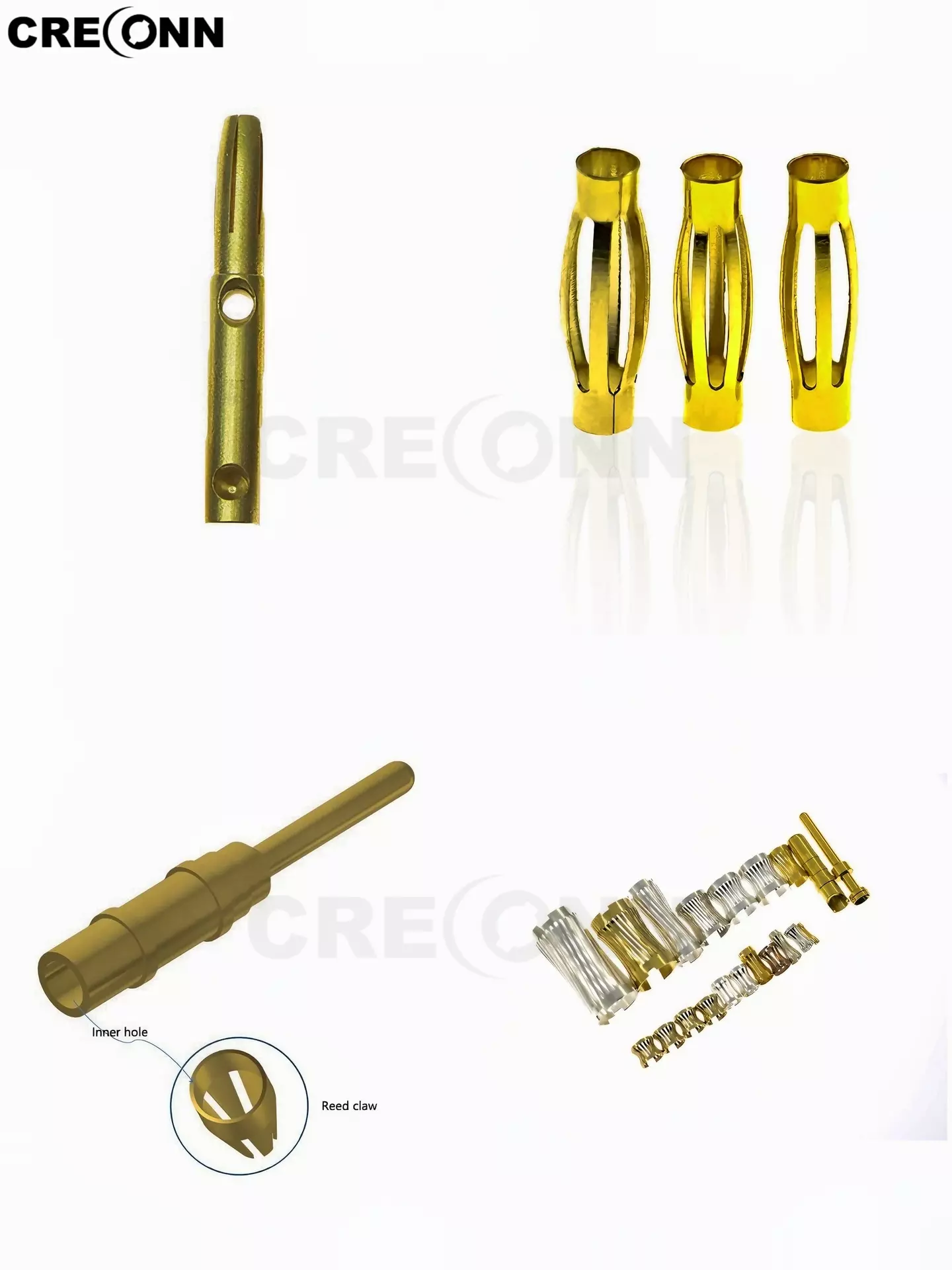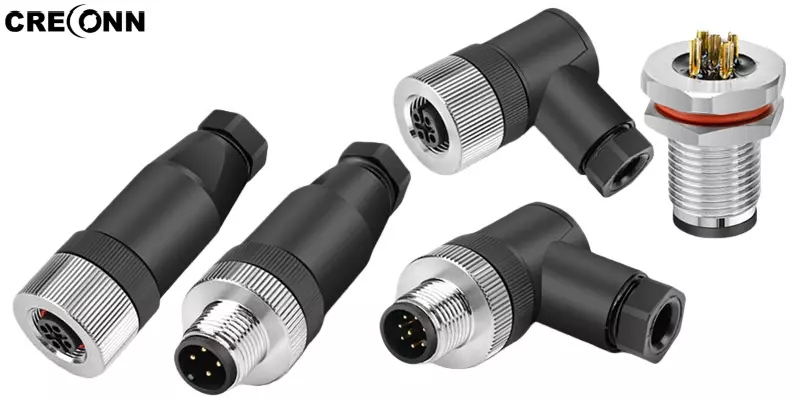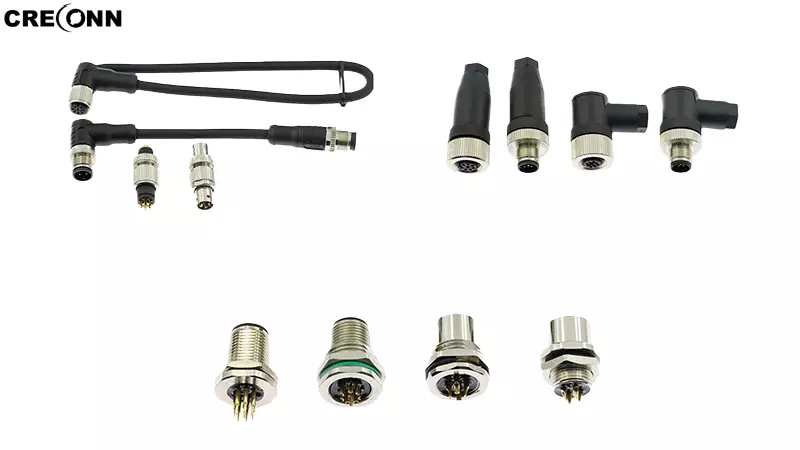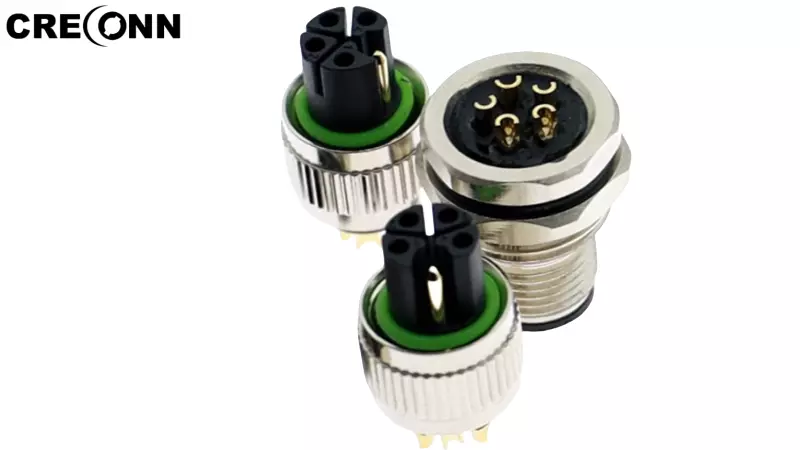Suggestions for the Selection of Leaf Springs, Claw Springs, Crown Springs, and Drum Springs
Suggestions for the Selection of Leaf Springs, Claw Springs, Crown Springs, and Drum Springs
In the design of pin-socket connections (e.g., connectors, terminals), the choice between leaf spring, claw spring, crown spring, and drum spring depends on the application requirements, performance needs, and cost considerations. Below is a comparison and selection guide for these four spring types.
1. Leaf Spring
u Features:
- Made from single or multiple bent metal strips, simple in structure.
- Moderate contact force, low insertion/extraction force.
- Low cost, easy to manufacture.
u Applications:
- Low-current, low-frequency signal connections (e.g., consumer electronics, small PCB connectors).
- Applications with low mating cycles (typically a few thousand).
- Where lightweight and simple structures are preferred.
u Drawbacks:
- Prone to fatigue and deformation over time, leading to unstable contact.
2. Claw Spring
u Features:
- Fixed at one end, free to bend at the other (beam-like structure).
- Higher contact force, moderate insertion/extraction force.
- Can be designed for multi-point contact, improving reliability.
u Applications:
- Medium-current transmission (e.g., power connectors, automotive terminals).
- Moderate mating cycles (tens of thousands).
- Where stable contact resistance is required.
u Drawbacks:
- More complex than leaf springs, slightly higher cost.
- May suffer from fretting wear in high-vibration environments.
3. Crown Spring
u Features:
- Ring-shaped with multiple arched spring contacts.
- Dense contact points, low contact resistance, uniform current distribution.
- Low insertion force but stable contact pressure, excellent vibration resistance.
u Applications:
- High-current, high-reliability connections (e.g., power equipment, industrial connectors).
- High-frequency signal transmission (reduced inductance due to multi-point contact).
- High mating cycles (100,000+), harsh environments (vibration, high temperature).
u Drawbacks:
- Higher cost, complex structure.
- Requires high manufacturing precision (e.g., spring symmetry).
4. Drum Spring
u Features:
- Cylindrical coil or wave spring structure, deforms axially.
- High contact force, higher insertion/extraction force, but self-cleaning effect.
- Excellent fatigue resistance, long lifespan.
u Applications:
- High-current, high-power connections (e.g., battery contacts, charging stations).
- Where high contact pressure is needed to minimize resistance.
- High-vibration/shock environments (e.g., aerospace, military).
u Drawbacks:
- High insertion force, not ideal for frequent mating.
- Larger size, requires more space.
ü Key Selection Factors
|
Factor |
Leaf Spring |
Cantilever Spring |
Crown Spring |
Drum Spring |
|
Current Rating |
Low |
Medium |
High |
Very High |
|
Mating Cycles |
Low |
Medium |
High |
High |
|
Vibration Resistance |
Weak |
Moderate |
Strong |
Very Strong |
|
Contact Resistance |
High |
Moderate |
Low |
Very Low |
|
Cost |
Low |
Moderate |
High |
High |
Examples:
- USB-C Connector: Often uses crown spring (multi-point contact, high durability).
- Automotive Battery Terminal: Drum spring (high current, vibration resistance).
- SIM Card Socket: Leaf spring (low cost, low current).
Guangdong Corecon Precision Industry Co., Ltd. aims to be your reliable partner in pin and socket manufacturing. Our professional team stands ready to support you, driving your business forward. Choose Corecon for a trustworthy partnership and a brighter future. Contact us for inquiries or more information.













